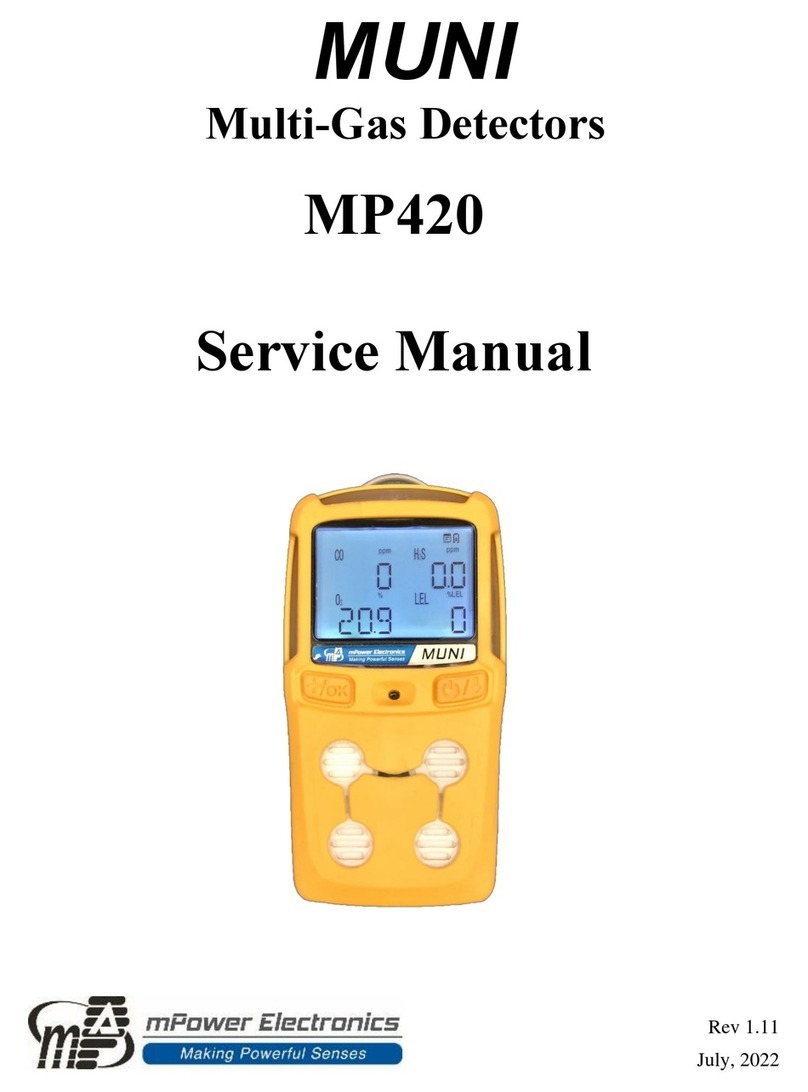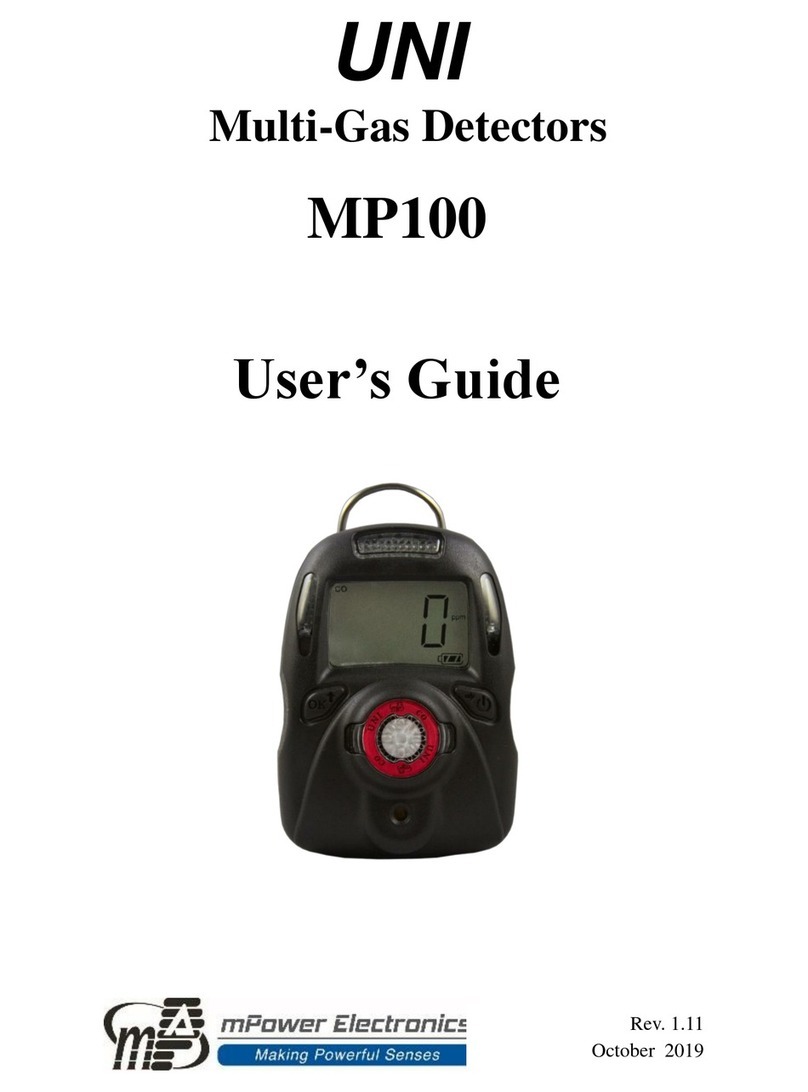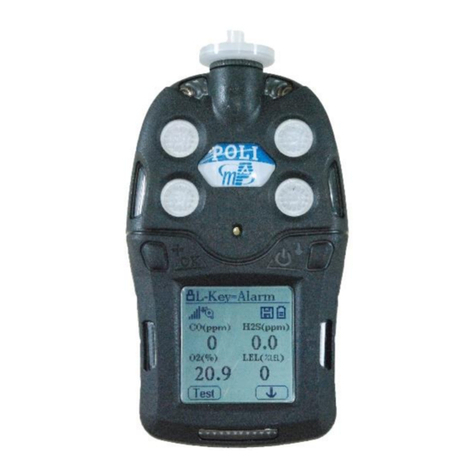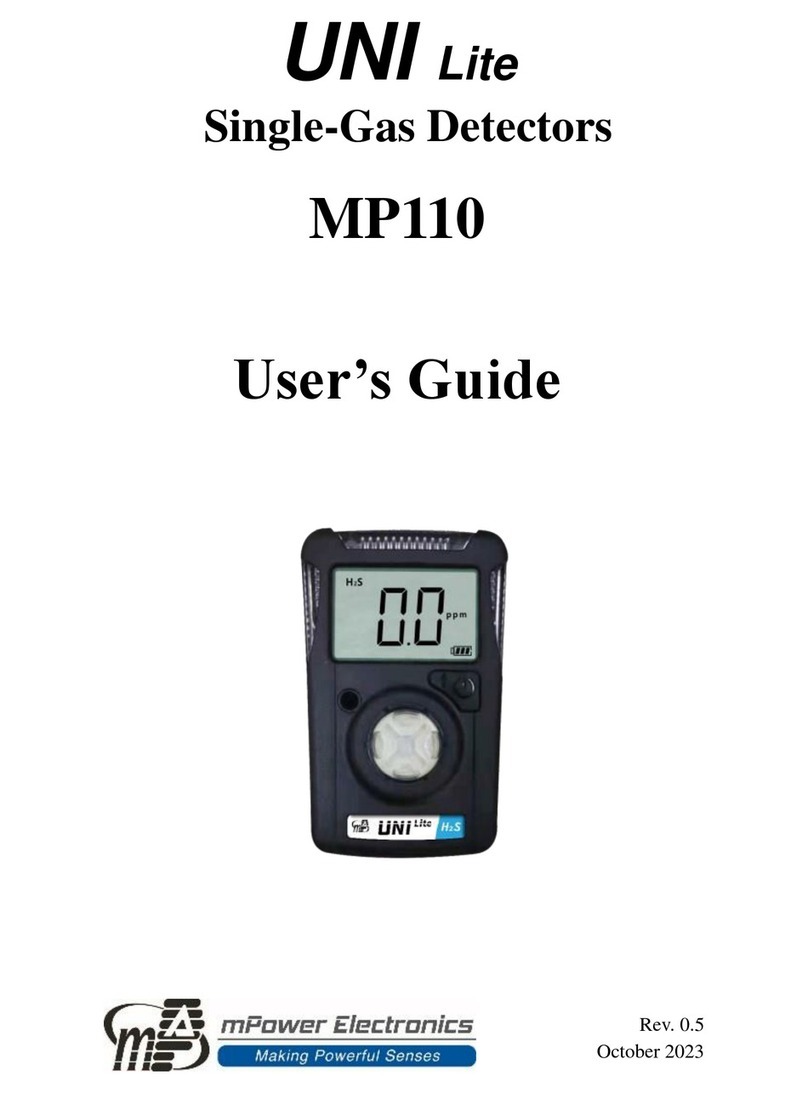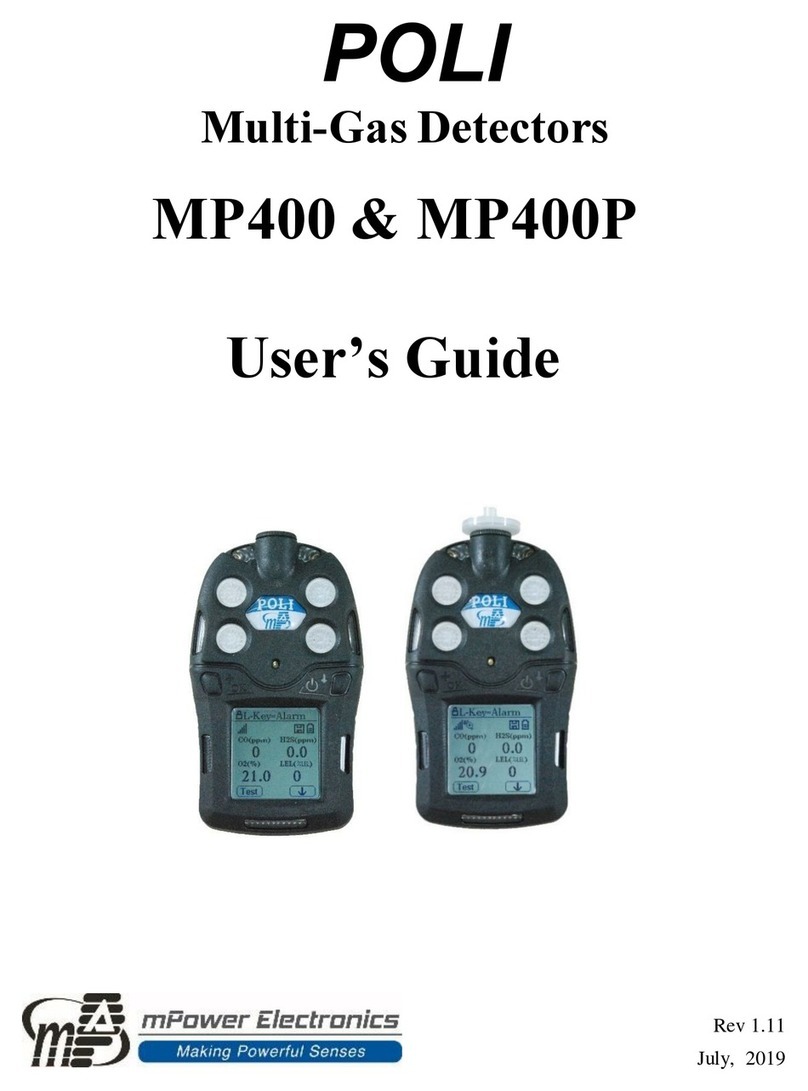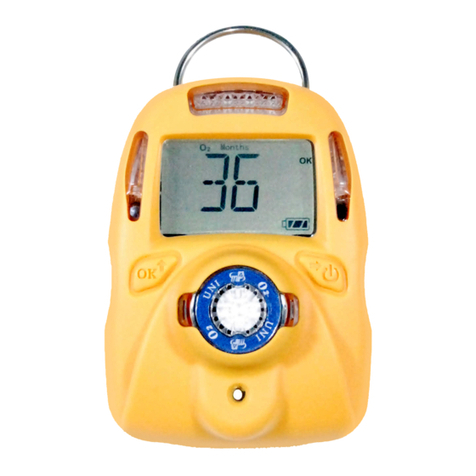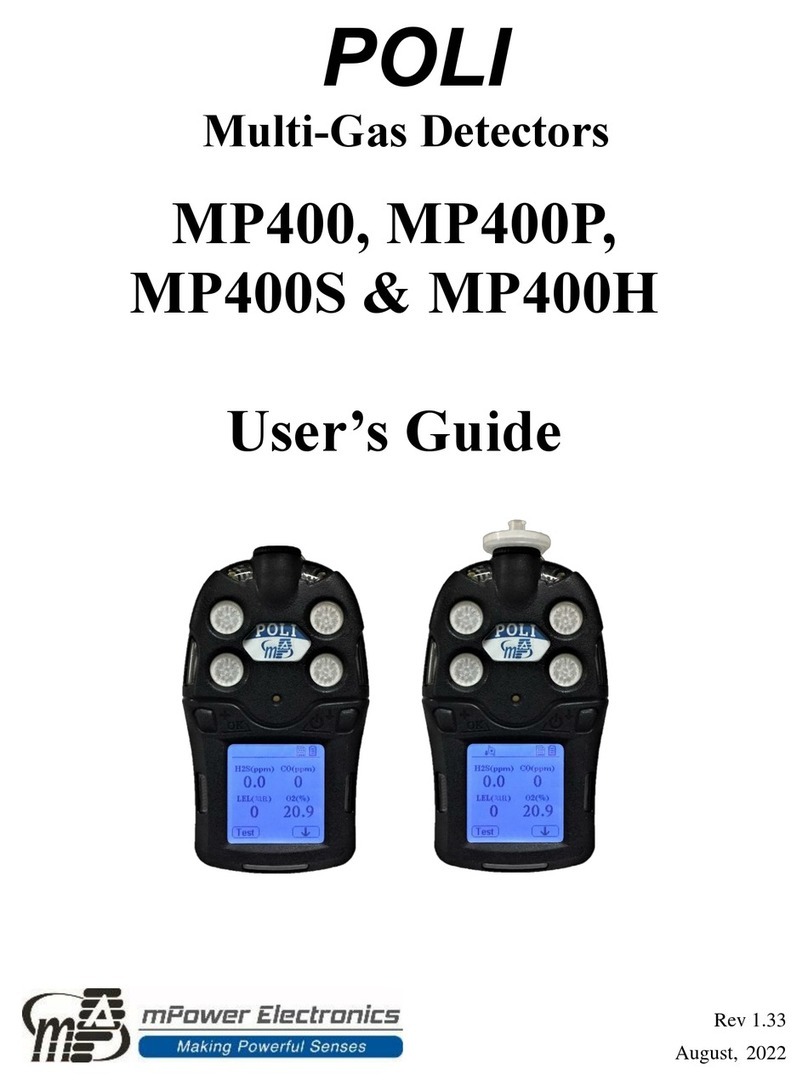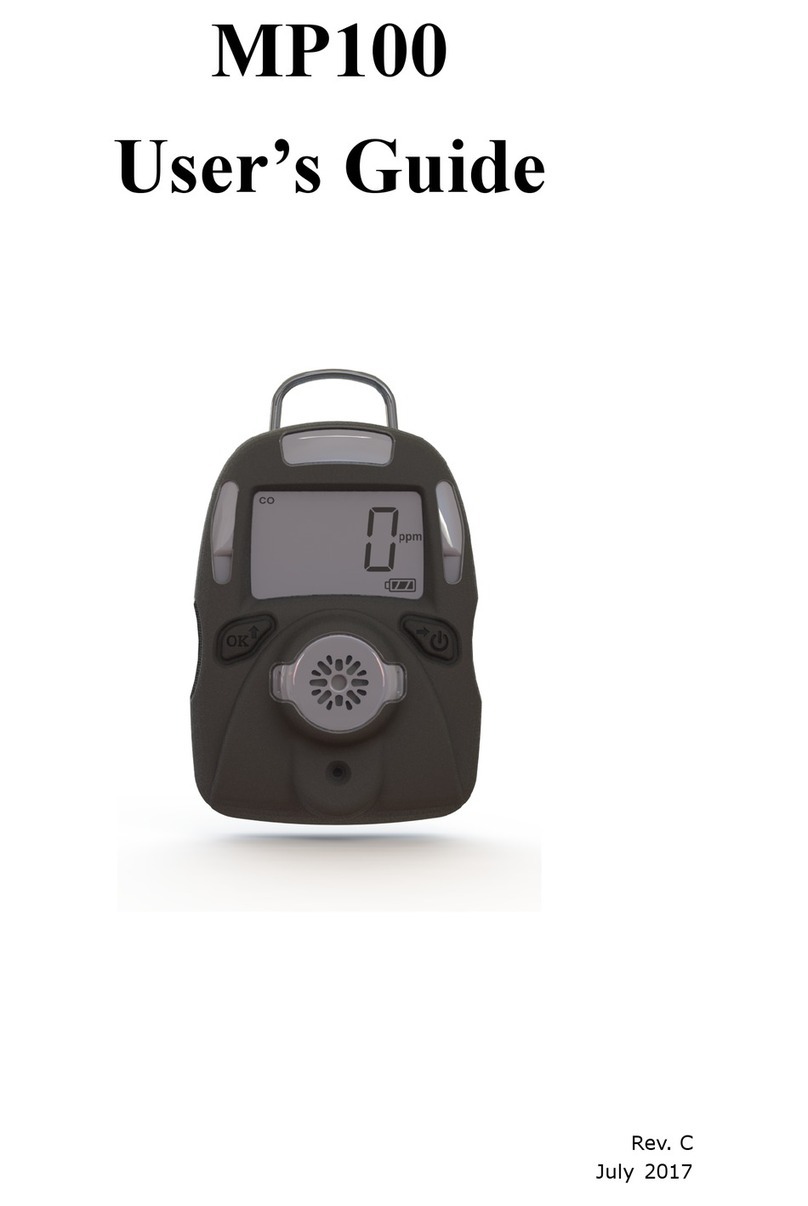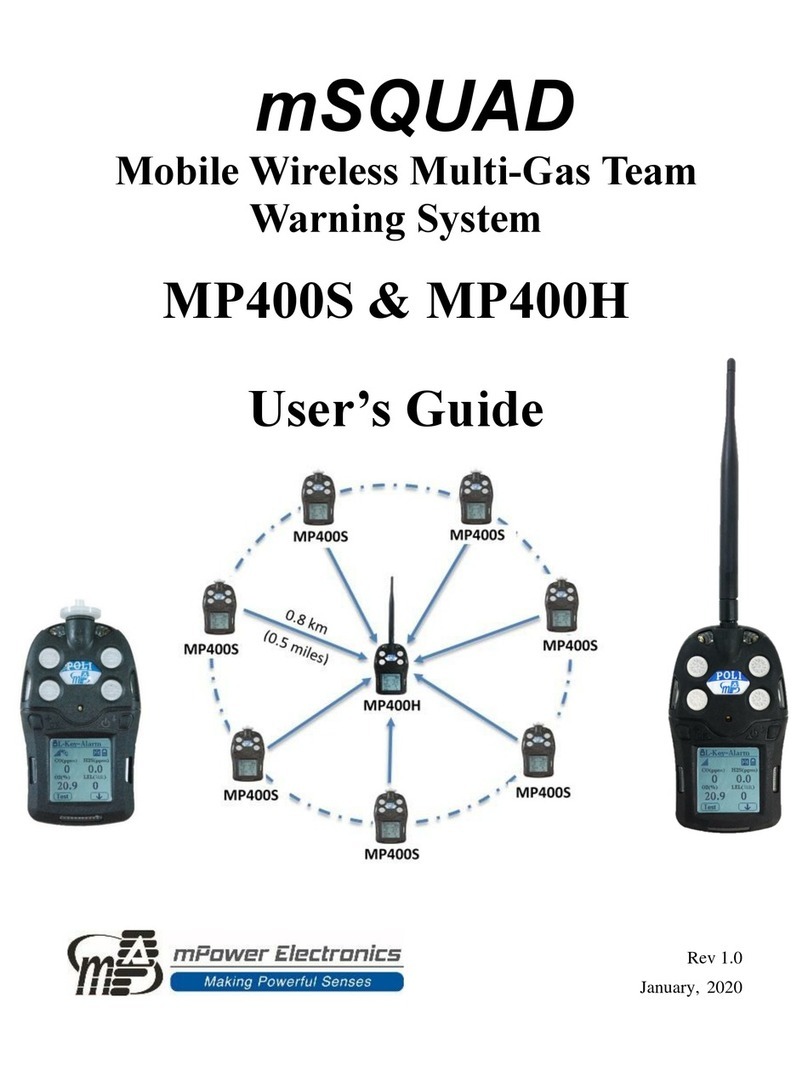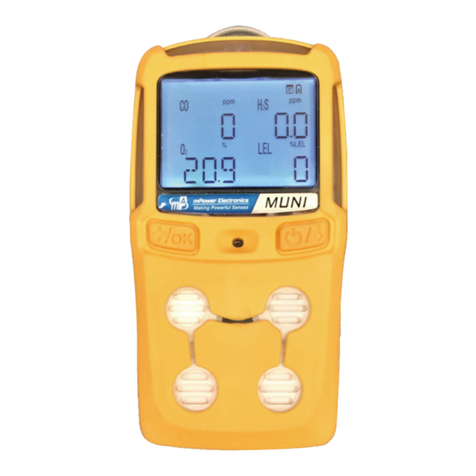POLI User’s Guide
1
Contents
1. General Information........................................................................................................ 5
1.1 Main Features............................................................................................................ 5
2. User Interface.................................................................................................................. 6
2.1 Displays and Keys..................................................................................................... 6
2.2 Active Sensor Displays............................................................................................. 8
2.3 User Menu................................................................................................................. 9
3. Battery........................................................................................................................... 10
3.1 Replacing A Battery................................................................................................ 10
3.2 Battery Status.......................................................................................................... 10
4. Turning On or Off......................................................................................................... 11
4.1 Turning On.............................................................................................................. 11
4.2 Turning Off............................................................................................................. 11
4.3 Testing Alarm Indicators ........................................................................................ 12
4.4 Pump Status ............................................................................................................ 12
4.5 Calibration Status.................................................................................................... 12
4.6 Bump Status............................................................................................................ 13
5. Config Mode................................................................................................................. 14
5.1 Entering Config Mode ............................................................................................ 14
5.2 Menus and Sub-menus............................................................................................ 15
6. Calibration and Test...................................................................................................... 24
6.1 Manual Alarm Test................................................................................................. 24
6.2 Bump Testing and Calibration................................................................................ 24
7. Data Communication.................................................................................................... 28
8. Maintenance.................................................................................................................. 29
8.1 Replacing Filters..................................................................................................... 29
8.2 Removing/Cleaning/Replacing Sensor Modules.................................................... 29
8.3 Replacing Pumps .................................................................................................... 30
9. Alarm Overview............................................................................................................ 31
9.1 Alarm Signals.......................................................................................................... 31
9.2 Testing Alarms........................................................................................................ 31
